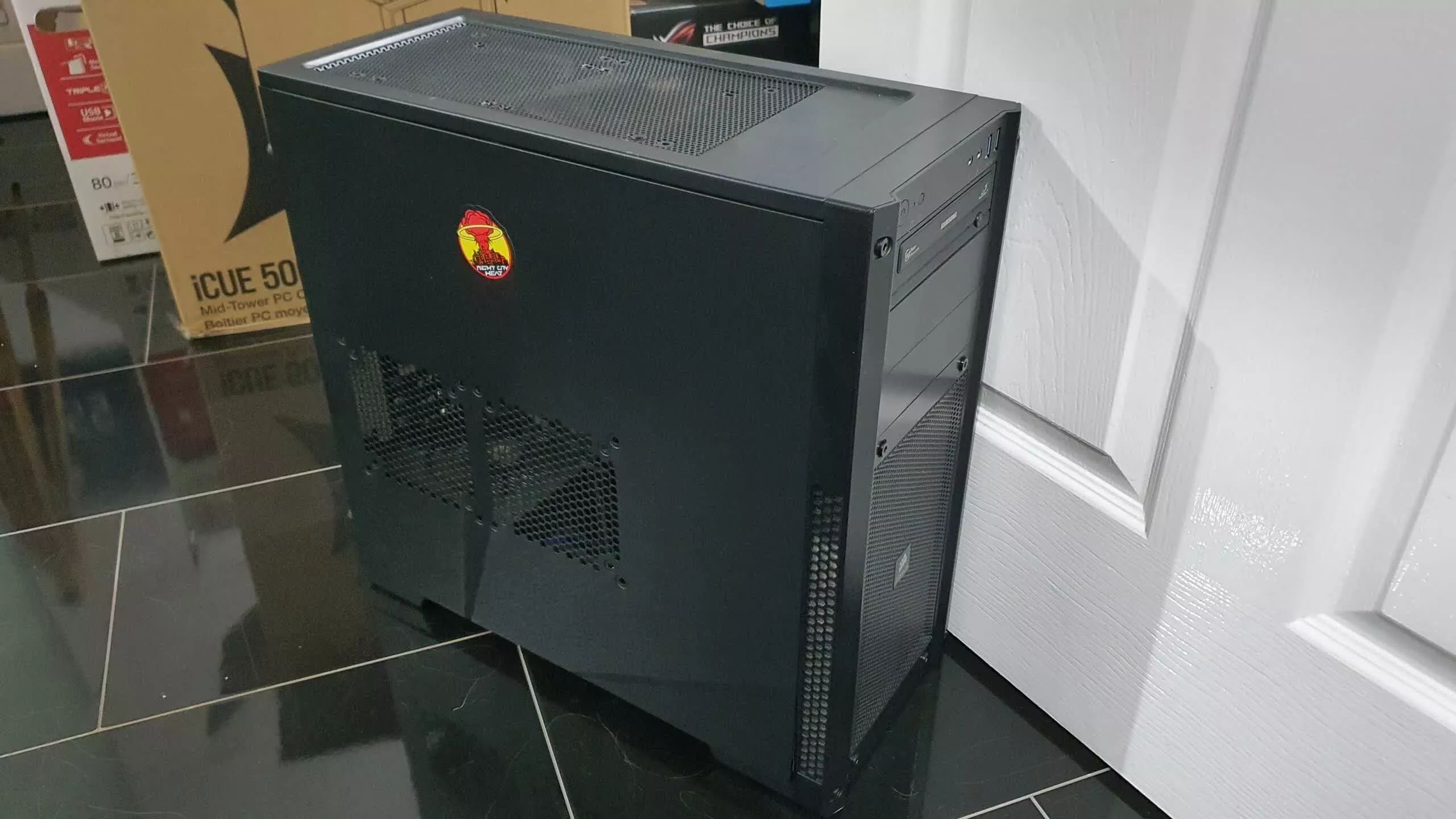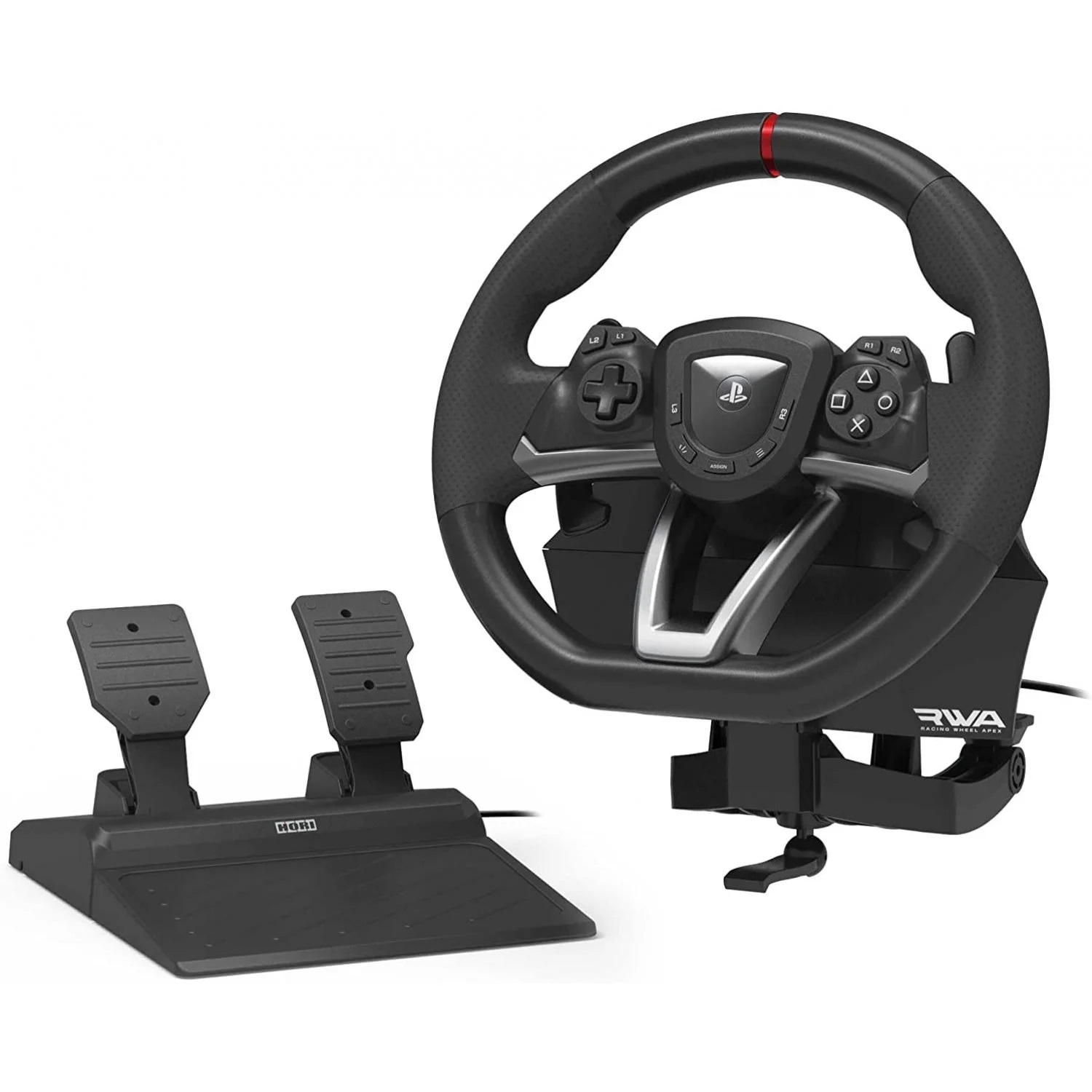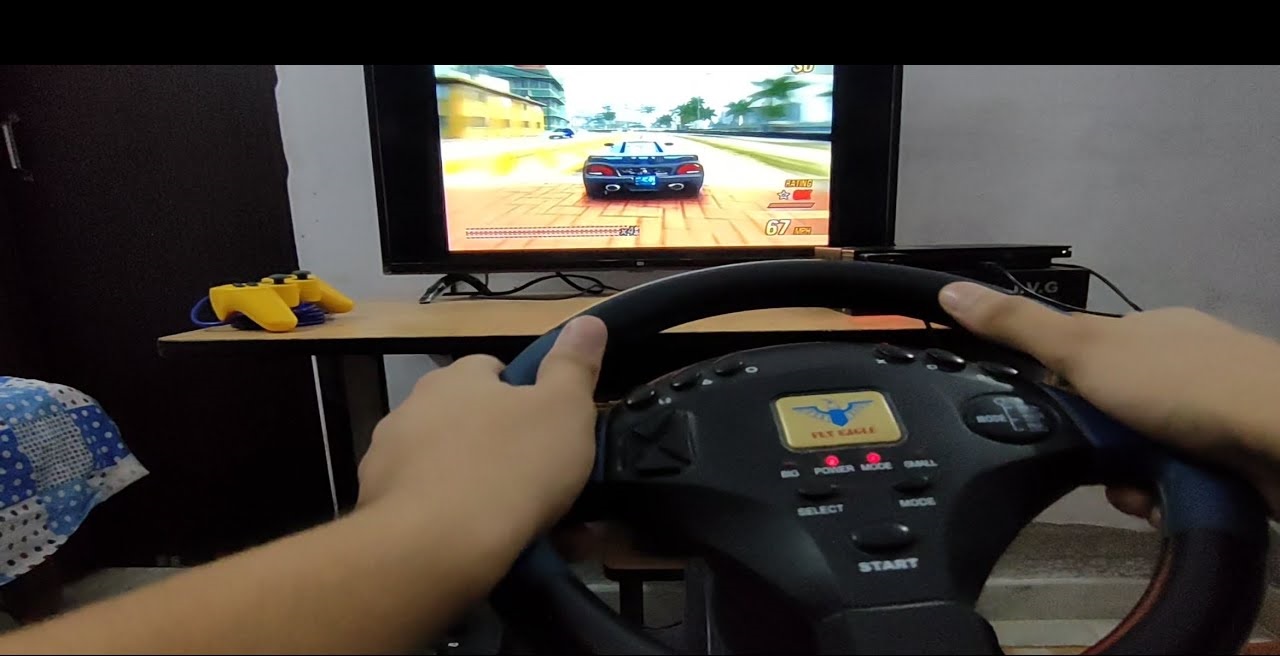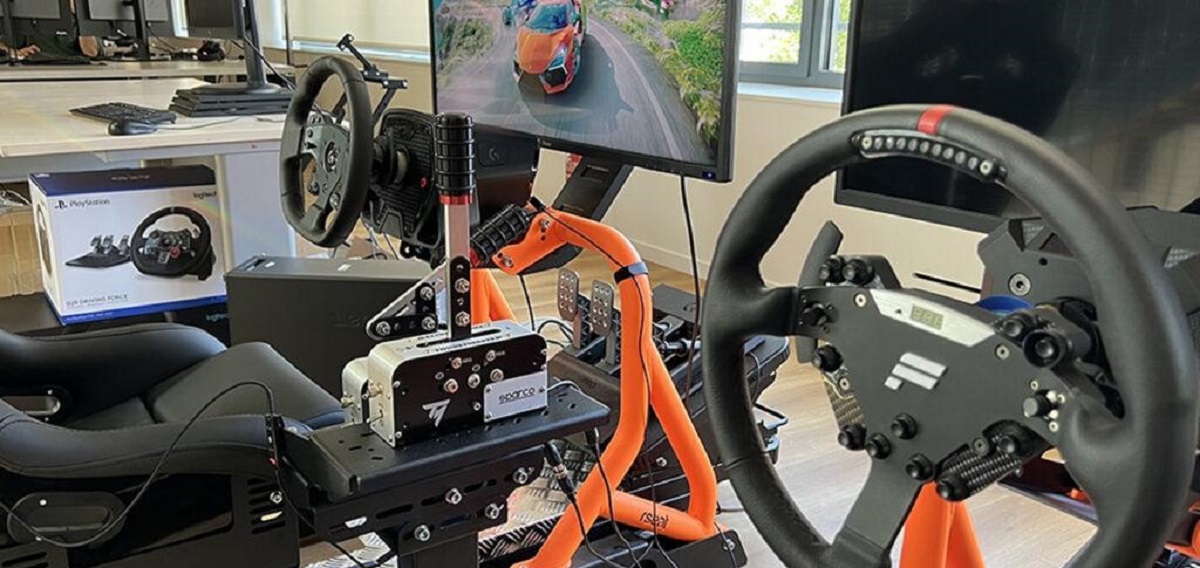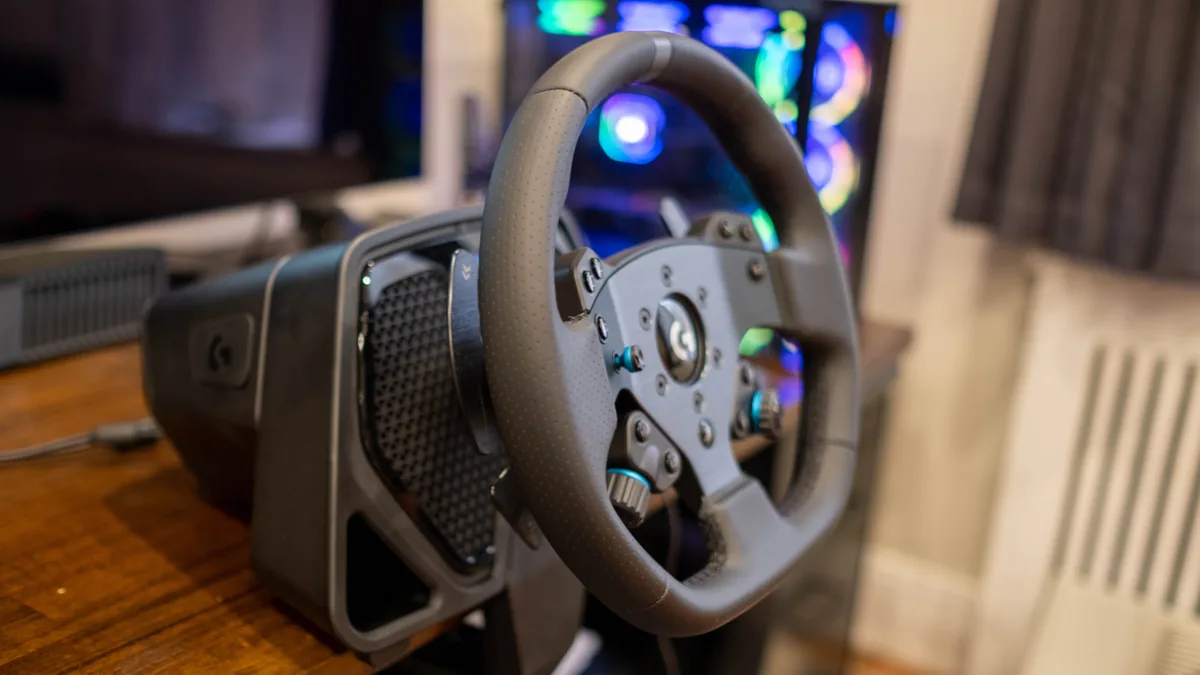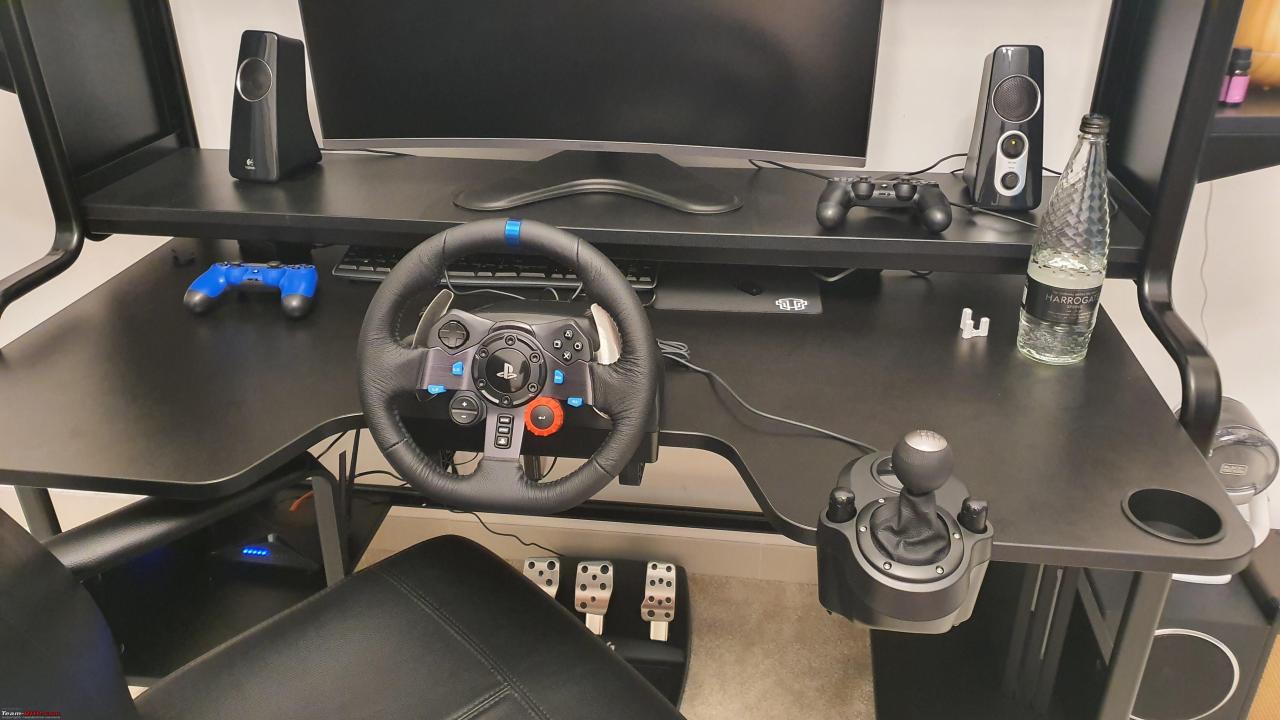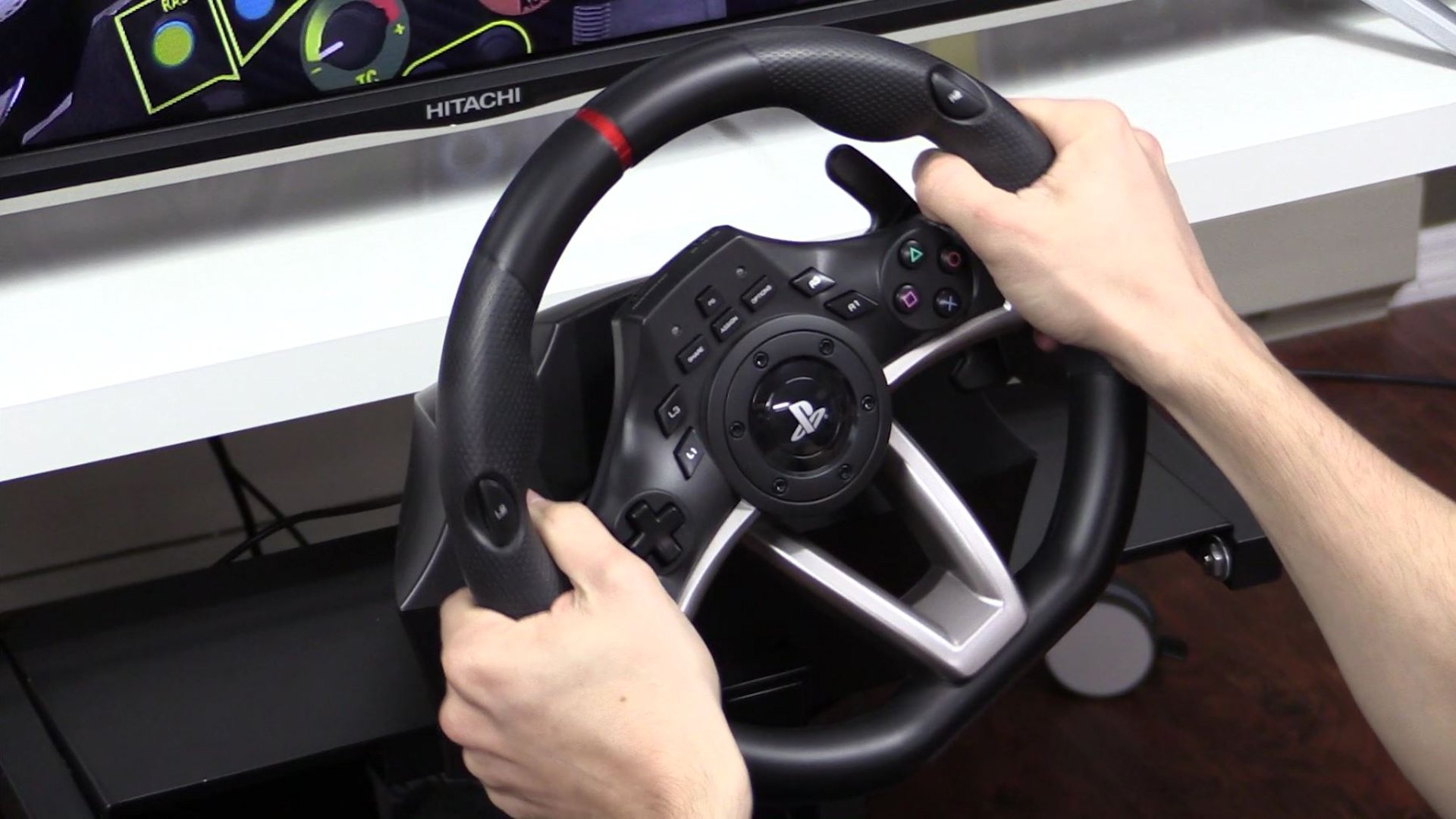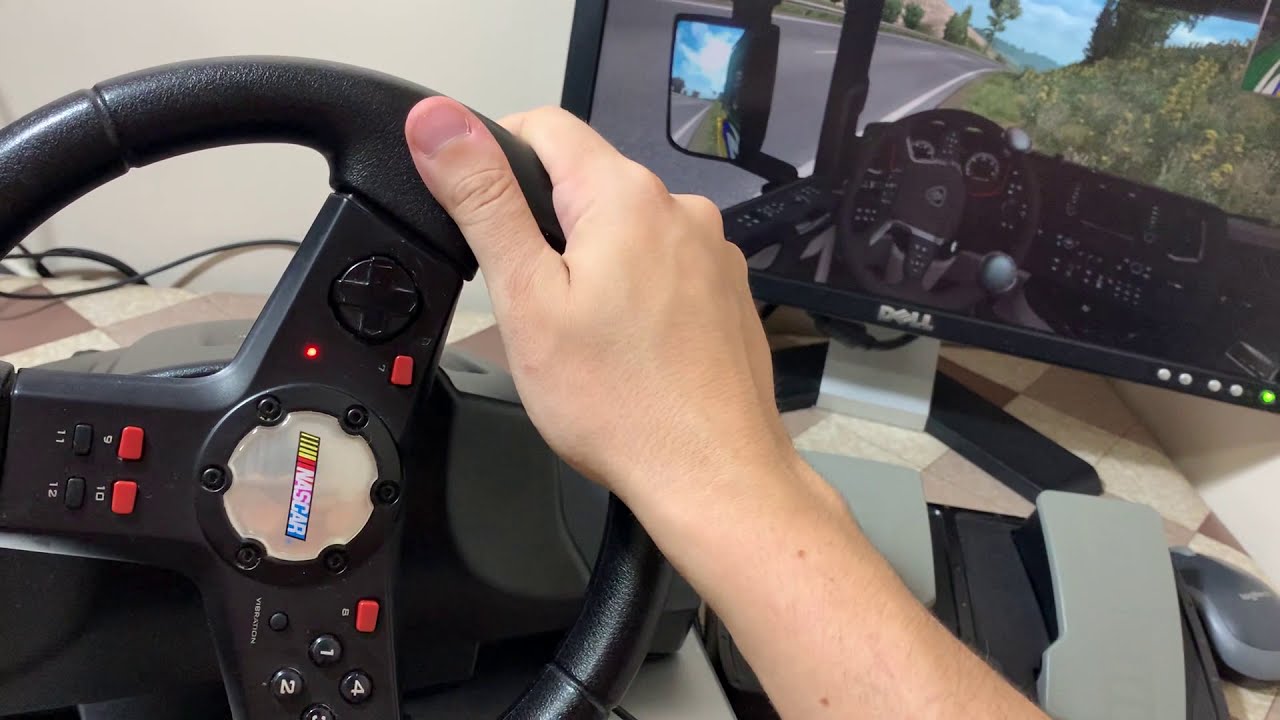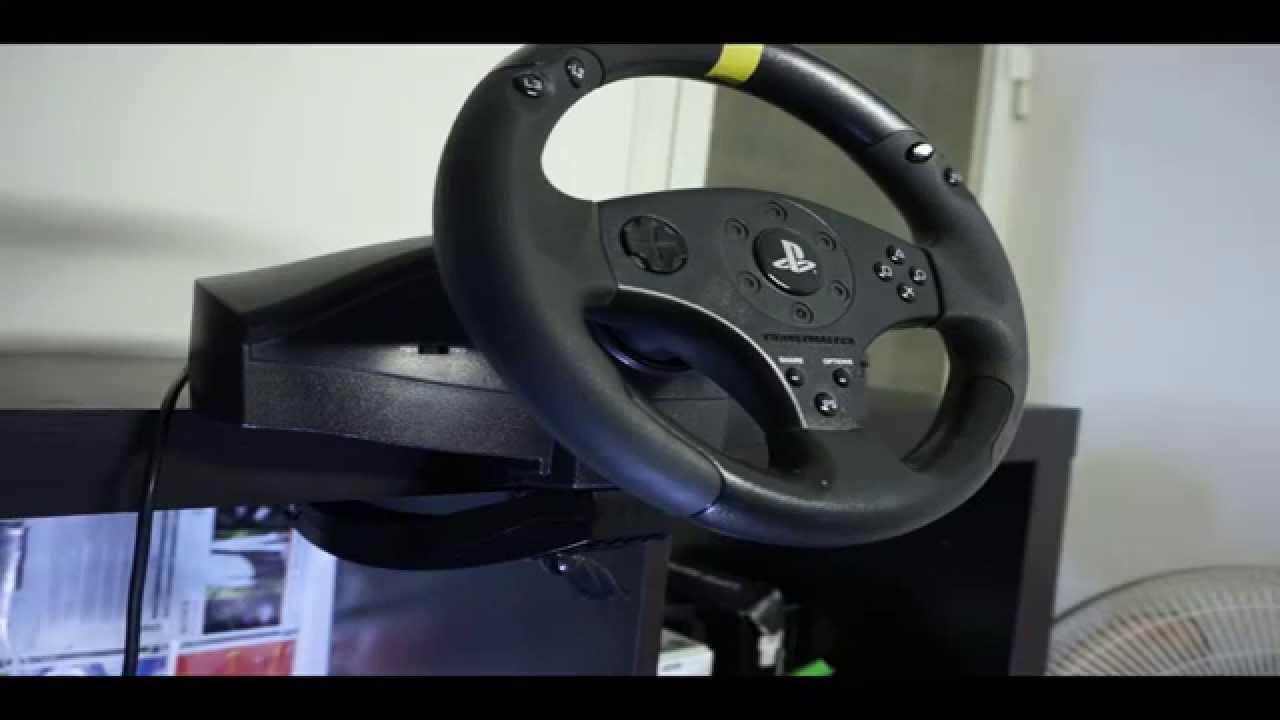Introduction
Welcome to our guide on how to put your PC case on wheels! If you’re tired of your computer being confined to one spot, then this is the perfect solution for you. By adding wheels to your PC case, you can easily move it around your home or office without any hassle.
Having the flexibility to move your computer wherever you need it can be incredibly convenient. Whether you’re a gamer who wants to set up your rig in different areas of the house or an office worker who needs to switch between workstations, putting your PC case on wheels allows you to easily transport it from one place to another.
In this comprehensive guide, we’ll outline the benefits of putting your PC case on wheels and walk you through the step-by-step process of how to do it yourself. By the end, you’ll have the knowledge and confidence to transform your stationary computer into a mobile powerhouse.
Please note that while this guide provides general instructions, it’s important to consider the specific design and weight of your PC case before proceeding. Additionally, if you’re not comfortable with DIY projects or modifying your computer case, it’s always a good idea to consult with a professional or experienced technician.
Now, let’s dive into the world of mobile computing and discover the benefits of putting your PC case on wheels!
Benefits of Putting Your PC Case on Wheels
There are numerous advantages to putting your PC case on wheels. Let’s explore some of the key benefits that inspired many computer enthusiasts and professionals to make their systems mobile.
- Convenience: The primary benefit of having your PC case on wheels is the convenience factor. It allows you to easily move your computer from one location to another without the need for heavy lifting or disassembling your system. Whether you want to reposition your setup, clean your workspace, or transport your PC to another room or event, having wheels on your PC case makes it a breeze.
- Flexibility: By putting your PC case on wheels, you gain the ability to rearrange your workspace or gaming area as needed. This flexibility comes in handy when you want to optimize your environment for productivity or entertainment. You can easily adapt your setup to accommodate changes in lighting, seating positions, or even collaborate with others by simply rolling your PC case to the desired spot.
- Portability: If you frequently attend LAN parties, gaming tournaments, or even need to take your PC to a friend’s house, having wheels on your PC case makes it significantly easier to transport. Instead of struggling with a bulky and heavy tower, you can effortlessly roll it to your destination, saving time and energy.
- Improved Airflow: Another advantage of having your PC case on wheels is the potential for improved airflow. With the ability to move your computer around, you can easily access the back and sides of the case, allowing for better cable management and ventilation. Proper airflow is crucial for maintaining optimal performance and reducing the risk of overheating.
- Space Optimization: If you have limited space in your home or office, putting your PC case on wheels can help you make the most of the available area. By being able to move your computer when it’s not in use or tuck it away in a corner, you can free up valuable desk space for other tasks or equipment.
By putting your PC case on wheels, you unlock a world of convenience, flexibility, and portability. It’s a simple modification that can significantly enhance your computing experience and make your setup more versatile. Now that you understand the benefits, let’s move on to the next section, where we’ll discuss the things you’ll need to get started.
Things You Will Need
Before you can start putting your PC case on wheels, it’s important to gather the necessary tools and materials. Here’s a list of items you’ll need to successfully complete this project:
- PC Case: Ensure you have a compatible PC case that can accommodate wheels. Take note of the dimensions and weight of your case, as this information will be essential when choosing the right wheels.
- Wheels: Look for high-quality wheels suitable for your PC case’s weight and design. Opt for sturdy and durable wheels that can withstand the movement and weight of your computer. Consider factors like the wheel diameter, load capacity, and brake mechanism based on your specific needs.
- Screwdriver: A screwdriver is essential for removing and reattaching panels on your PC case. Ensure you have the appropriate screwdriver type based on the screws used in your case.
- Marker or Pencil: You’ll need a marker or pencil to mark the locations where you’ll be attaching the wheels to your PC case. Make sure the marker is easily visible on your case’s surface.
- Drill and Drill Bit: To install the wheels, you’ll need a drill and a drill bit that correspond in size to the screws provided with the wheels. Ensure the drill is in good working condition and that you have the appropriate drill bit for the job.
- Safety Gear: As with any DIY project, it’s essential to prioritize safety. Consider wearing gloves and safety glasses while working with tools and materials to protect your hands and eyes from any potential accidents.
Once you have all the necessary tools and materials gathered, you’ll be ready to move on to the next step. In the following sections, we’ll guide you through the process of measuring your PC case, choosing the right wheels, and installing them securely.
Step 1: Measure Your PC Case
Before you can proceed with adding wheels to your PC case, it’s important to accurately measure its dimensions. This step will help you determine the appropriate size and weight capacity for the wheels you’ll need to purchase. Here’s how to measure your PC case:
- Measure the Length and Width: Using a measuring tape, carefully measure the length and width of your PC case. Start from one edge of the case and measure to the opposite edge. Repeat this process on both sides to ensure accuracy.
- Record the Measurements: Once you have the measurements, note them down in a notepad or on your phone. Make sure to write down the measurements in both inches and centimeters for convenience when comparing with the wheel specifications later on.
- Measure the Height and Weight: Next, measure the height of the PC case from the bottom to the highest point. This measurement will come in handy when deciding the appropriate height of the wheels you’ll be installing. Additionally, weigh your PC case or refer to its specifications to determine its weight. This information is crucial in selecting wheels with the appropriate load capacity.
Remember, accurate measurements are essential to ensure compatibility between your PC case and the wheels you choose. Improper measurements can lead to wheels that are too small or unable to support the weight of your computer, compromising stability and safety.
Once you have recorded all the necessary dimensions of your PC case, you’re ready to move on to the next step: choosing the right wheels. By doing so, you’ll ensure a smooth and efficient installation process that will provide you with the mobility and convenience you desire.
Step 2: Choose the Right Wheels
Now that you have the measurements of your PC case, it’s time to select the right wheels for the job. Choosing the appropriate wheels will ensure proper mobility and stability for your computer. Here are some factors to consider when selecting the wheels for your PC case:
- Load Capacity: Determine the weight of your PC case and look for wheels with a load capacity that exceeds this weight. It’s crucial to ensure that the wheels can adequately support the weight without compromising stability or risking damage to your computer.
- Wheel Diameter: Consider the diameter of the wheels and how it will affect the overall height of your PC case. Wheels with a larger diameter will elevate your computer higher off the ground, while smaller wheels will keep it closer to the surface. Choose a diameter that suits your preference and accommodates the space where you’ll be using your PC case.
- Wheel Type: Evaluate the type of wheels that will best suit your needs. There are various options available, such as caster wheels (which can swivel for greater maneuverability) and fixed wheels (which move in a straight line only). Consider factors like the surface on which you’ll be rolling your PC case and the level of mobility you require.
- Brake Mechanism: Determine if you need wheels with a brake mechanism to secure your PC case in place. Brakes will prevent your computer from rolling unintentionally, providing additional stability during use or when stationary. Choose wheels with a reliable and easy-to-use braking system if this feature is important to you.
- Quality and Durability: Opt for high-quality wheels that are built to last. Look for wheels made from sturdy materials, such as rubber or polyurethane, to ensure durability and resistance to wear and tear. Investing in quality wheels will provide long-term satisfaction and minimize the need for frequent replacements.
Once you’ve considered these factors and have a clear understanding of your requirements, it’s time to start searching for the perfect wheels for your PC case. Look for reputable suppliers or specialized hardware stores that offer a variety of options. Check product reviews and specifications to ensure that the wheels you choose meet your specific needs.
With the right wheels selected, you’re now ready to move on to the next step: preparing your PC case for the installation process.
Step 3: Preparing Your PC Case
Before you can install the wheels on your PC case, it’s important to prepare it for the process. This step involves removing any necessary panels or components that may hinder the installation or affect the stability of your computer. Here’s what you need to do to prepare your PC case:
- Turn Off and Unplug Your PC: Ensure your computer is turned off and disconnected from the power source to avoid any electrical hazards during the preparation process.
- Remove Side Panels: Use a screwdriver to remove the side panels of your PC case. Most cases have screws holding the panels in place. Take your time and keep track of the screws you remove to make reassembly easier later on.
- Internal Component Considerations: Assess the internal components of your PC case. If there are any components that obstruct the wheel installation or handle mounting points, you may need to temporarily remove them. This includes items like hard drives, power supply units, or extra fans.
- Plan for Cable Management: Take note of the existing cable management inside your PC case. Identify any cables that may need to be rerouted or rearranged to accommodate the addition of the wheels. Proper cable management will help prevent cables from becoming tangled or tangled as you move your computer.
By taking the time to prepare your PC case, you’ll ensure a smoother and more efficient installation process. Removing any potential obstacles or components that could interfere with the wheel installation will help maintain stability and prevent any damage to your computer. In the next step, we’ll guide you through marking the wheel locations on your PC case, which will set the stage for the actual installation.
Step 4: Marking the Wheel Locations
With your PC case properly prepared, it’s time to mark the locations where you’ll be attaching the wheels. This step ensures precise placement and optimal stability for your computer. Follow these guidelines to mark the wheel locations on your PC case:
- Choose Wheel Placement: Decide where you want to position the wheels on your PC case. Typically, the best locations are at the corners or edges of the case, where they can provide maximum support and balance.
- Using a Marker or Pencil: Take a marker or pencil and carefully mark the spots where you’ll be attaching the wheels. Make clear and visible marks on the surface of your PC case. Ensure that the marks are evenly spaced and aligned with the desired positions for your wheels.
- Consider Weight Distribution: Pay attention to the weight distribution of your PC case when marking the wheel locations. Aim for equal weight distribution on all four wheels to maintain stability and prevent any imbalance that could result in tipping or wobbling.
- Account for Clearance: Take into account any clearance requirements when marking the wheel locations. Ensure that the wheels will have enough space to rotate freely and that they won’t come into contact with any internal components or cables.
Take your time when marking the wheel locations to ensure accuracy. Double-check the marks to ensure they’re in the right positions and properly aligned. Do not rush this step, as precision is crucial for a successful installation.
Once you’ve marked the wheel locations, you’re now ready to move on to the next step: drilling the holes for the wheel installation. This is a critical part of the process, so be sure to follow the instructions carefully to ensure a secure and stable attachment of the wheels to your PC case.
Step 5: Drilling the Holes
With the wheel locations marked on your PC case, it’s time to drill the necessary holes to attach the wheels securely. This step is crucial for ensuring a stable and reliable installation. Follow these steps to drill the holes for the wheel installation:
- Select the Drill Bit Size: Choose a drill bit that matches the diameter of the screws provided with your wheels. It’s important to use the correct size to ensure a tight and secure fit.
- Prepare the Drilling Area: Place your PC case on a stable and secure surface, such as a workbench or table. Ensure that the area is well-lit and clear of any obstructions that may hinder the drilling process.
- Align the Drill Bit: Position the drill bit precisely over one of the marked wheel locations on your PC case. Hold the drill perpendicular to the surface and apply gentle pressure to stabilize it.
- Drill the Hole: Start drilling slowly and steadily. Apply consistent pressure to allow the drill bit to penetrate the surface without exerting excessive force. Use caution to avoid drilling too deep or damaging any internal components.
- Repeat for the Remaining Holes: Once the first hole is drilled, move on to the remaining marked wheel locations on your PC case. Repeat the drilling process for each hole, ensuring the same precision and care.
As you drill the holes, periodically clear away any debris or wood shavings using a brush or cloth. This will help maintain a clean and smooth drilling area and prevent any interference with the installation process.
Remember to exercise caution when drilling, as excessive force or incorrect technique can lead to damage or instability. Take your time and ensure each hole is drilled properly before moving on to the next step. Once the holes are drilled, you’re ready to move on to the exciting step of installing the wheels on your PC case.
Step 6: Installing the Wheels
With the holes drilled, it’s time to move on to the exciting step of installing the wheels onto your PC case. Proper installation is crucial to ensure stability and safe mobility. Follow these steps to correctly install the wheels:
- Attach the Wheels: Take one of the wheels and align it with one of the drilled holes on your PC case. Insert the provided screws from the wheel kit into the holes and tighten them using a screwdriver. Repeat this process for the remaining wheels, ensuring they are all securely attached.
- Tighten the Screws: Ensure the screws are tightened firmly but do not overtighten them, as this could damage the PC case or strip the threads. It’s important to strike the right balance between tightness and stability.
- Test the Wheels: Once all the wheels are installed, carefully lift your PC case and test the mobility. Roll it around gently to ensure the wheels are moving smoothly and there are no issues with the installation. Check for any wobbling or instability and make necessary adjustments if needed.
During the installation process, pay attention to the position of the wheels and ensure they are evenly placed and properly aligned. This will help distribute the weight of your PC case evenly and prevent any imbalance or tilting.
Once the wheels are installed and properly tested, you’re almost ready to enjoy the convenience and mobility of your PC case on wheels. However, before you wrap up the project, there’s one more important step to ensure everything is working as expected: testing and adjusting.
Step 7: Testing and Adjusting
After the wheels are installed, it’s crucial to thoroughly test and make necessary adjustments to ensure the stability and functionality of your PC case. This final step will help identify any potential issues and provide an opportunity to fine-tune the installation. Follow these steps to test and adjust your PC case on wheels:
- Stability Check: Place your PC case on a level surface and check for any noticeable wobbling or instability. If you notice any instability, carefully inspect the wheel attachments and screws to ensure they are secure and tightened properly. Make any necessary adjustments to ensure all wheels are firmly attached.
- Mobility Test: Roll your PC case on different surfaces to test its mobility. Ensure the wheels move smoothly and effortlessly without any obstruction or difficulty. Pay attention to any potential scraping or resistance, which may indicate the need for additional adjustments or repositioning of the wheels.
- Cable Management: Check the cable management inside the PC case. Ensure that the movement of the case on wheels does not cause any cables to become tangled or disconnected. Make any necessary cable rearrangements to maintain a clean and organized setup.
- Brake Test: If your wheels have a brake mechanism, test the brakes to ensure they engage and disengage properly. Lock the brakes in place and check if the PC case remains stationary. Release the brakes to allow the case to move freely. Repeat this test on all the wheels.
By performing these tests, you’ll be able to address any potential issues promptly and make the necessary adjustments for optimal functionality and stability. Keep in mind that periodic checks and adjustments may be necessary, particularly if you frequently transport or reposition your PC case.
Once you are satisfied with the stability, mobility, and cable management of your PC case on wheels, congratulations! You have successfully completed the process of putting your PC case on wheels. Enjoy the convenience and flexibility of easily moving your computer wherever you need it!
Conclusion
Congratulations on successfully putting your PC case on wheels! By following the steps outlined in this guide, you have transformed your stationary computer into a mobile powerhouse. The benefits of having your PC case on wheels are numerous, providing convenience, flexibility, and portability.
With the ability to move your computer easily, you can now optimize your workspace, rearrange your setup, and transport your PC with minimal effort. Whether you’re a gamer who wants to switch gaming stations or an office worker who needs to move between workstations, having wheels on your PC case offers the flexibility you need.
Throughout this guide, we covered the importance of measuring your PC case, choosing the right wheels, preparing your PC case, drilling the holes, installing the wheels, and testing and adjusting the setup. Each step was essential to ensure a stable and successful installation.
Remember, safety should always be a priority when undertaking any DIY project. Take your time, follow the instructions carefully, and wear appropriate safety gear. If you’re ever unsure or uncomfortable with the process, it’s best to seek professional assistance or consult with an experienced technician.
Now that you have your PC case on wheels, enjoy the convenience of easily moving your computer, optimizing your workspace, and enhancing your gaming or work experience. Keep in mind that regular maintenance and periodic checks will help maintain the stability and functionality of your PC case on wheels.
We hope this guide has been helpful in your journey towards creating a mobile computing setup. Happy computing!







